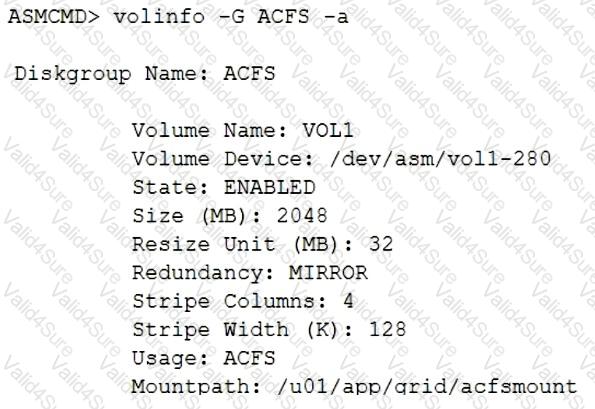1z0-078 Exam Dumps - Oracle Database 19c: RAC, ASM, and Grid Infrastructure Administration
Which two commands will stop the Oracle High Availability Services (OHAS) and prevent it from starting automatically at system boot on the local node? (Choose two.)
Examine this command and output:

Examine this command:

Which statement must be true for the successful execution of the second command?
Examine the output of this command:

TheACFSdisk group is a normal redundancy disk group with 5 GB of free space.
To increase the size of theACFSfile system, you execute this command as therootuser:
$ /sbin/acfsutil size +200M /u01/app/grid/acfsmount
Which two statements are true regarding the outcome of this command? (Choose two.)
Which two statements are true about the Global Enqueue Service, Instance Locks, and global enqueues in Oracle 19c RAC? (Choose two.)
Which task must be performed before running theOPatchutility to patch Oracle Grid Infrastructure 19c?